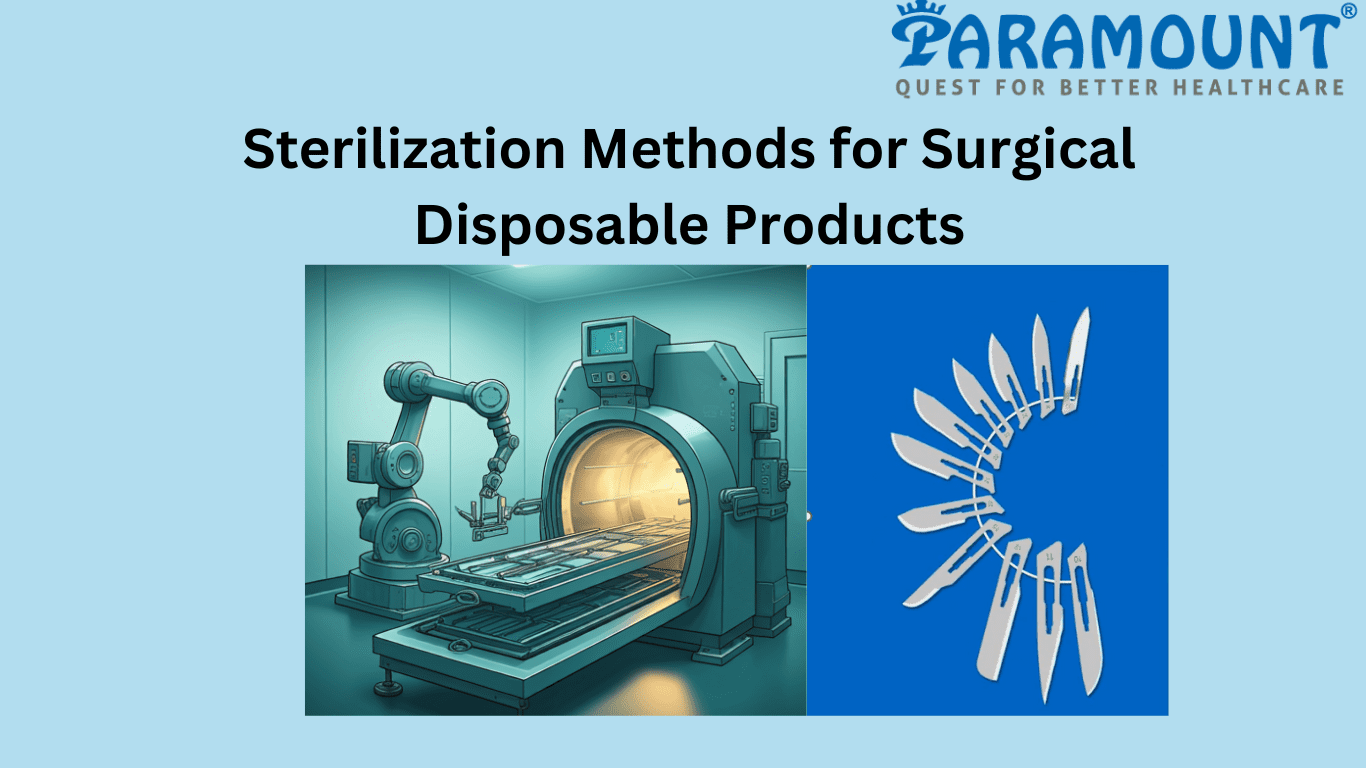Sterilization is a critical process in healthcare, particularly for surgical disposable products, where the safety and well-being of patients depend on sterile instruments. Surgical disposables come into direct contact with sterile body tissues, and any contamination can lead to severe infections. Among the various sterilization methods available today, gamma radiation stands out as a highly effective process for surgical disposable products. In this blog, we’ll explore different sterilization methods and focus on why Paramount Surgimed exclusively uses gamma radiation for sterilizing its surgical disposable products.
Why Sterilization is Important?
Instruments used in surgeries must be free of harmful microorganisms—bacteria, viruses, fungi, and spores. If not properly sterilized, these pathogens can cause infections, such as surgical site infections (SSIs), which can lead to complications, longer recovery times, and increased healthcare costs. Sterilization ensures that all microorganisms are effectively eliminated from surgical disposables before they come into contact with patients.
1. Steam Sterilization (Autoclaving)
Steam sterilization, also known as autoclaving, is one of the most commonly used methods in hospitals. Instruments are exposed to high-pressure steam at temperatures ranging from 121°C to 134°C. The combination of heat and moisture is effective in destroying microorganisms by denaturing their proteins.
Benefits:
- Highly effective for metal instruments and heat-resistant surgical disposables.
- Non-toxic and leaves no harmful residues.
2. Ethylene Oxide (EtO) Sterilization
Ethylene oxide (EtO) is a gas-based sterilization method used primarily for heat- and moisture-sensitive surgical disposables. The gas penetrates packaging and complex devices, killing microorganisms by disrupting their DNA. This method is ideal for instruments that cannot withstand high temperatures.
Benefits:
- Suitable for delicate surgical disposables, including those with complex structures.
- Effective for a wide range of medical devices, including plastics and electronics.
3. Hydrogen Peroxide Plasma Sterilization
Hydrogen peroxide plasma is a low-temperature sterilization method that uses vaporized hydrogen peroxide combined with plasma to kill microorganisms. This method is suitable for surgical disposable products that are sensitive to both heat and moisture, offering a quick and effective sterilization process.
Benefits:
- Fast and eco-friendly.
- Suitable for delicate, heat-sensitive surgical disposables.
4. Gamma Radiation Sterilization
Gamma radiation is one of the most advanced and effective sterilization methods used in the medical field. This process involves exposing surgical disposable products to high-energy gamma rays, which penetrate deeply into materials, effectively destroying microorganisms by breaking down their DNA. Paramount Surgimed exclusively uses gamma radiation to sterilize its surgical disposable products, ensuring maximum safety and efficiency.
Benefits:
- Deep penetration, ensuring thorough sterilization of both surfaces and internal areas of surgical disposables.
- Ideal for pre-packaged and disposable instruments, maintaining sterility until use.
- Suitable for heat-sensitive materials, ensuring that delicate surgical disposables remain intact.
- Fast and reliable, offering high sterilization accuracy with no residual effects.
5. Dry Heat Sterilization
Dry heat sterilization uses high temperatures, typically between 160°C and 170°C, over an extended period to sterilize surgical instruments. It is mainly used for items that cannot be exposed to moisture, such as powders, oils, or certain metal surgical disposables.
Benefits:
- Simple and cost-effective.
- Suitable for surgical disposables that may corrode or degrade with moisture.
Chemical Sterilization
Chemical sterilization involves the use of liquid chemical agents, such as glutaraldehyde or peracetic acid, to sterilize surgical disposables. This method is often used for flexible endoscopes and other devices that cannot withstand high temperatures or are needed for immediate use.
Key Benefits:
- Effective for delicate surgical disposables and devices with intricate designs.
- Provides quick sterilization, making it suitable for instruments required urgently.
The Advantage of Gamma Radiation for Surgical Disposable Products
At Paramount Surgimed, we prioritize patient safety by exclusively utilizing gamma radiation for sterilizing all our surgical disposable products. This method guarantees that our instruments—whether scalpels, biopsy punches, or dermal curettes—are free from any harmful microorganisms. Gamma radiation sterilization is particularly advantageous because:
- It ensures complete sterilization by penetrating deep into even the most complex surgical disposables.
- It’s suitable for pre-packaged and disposable items, maintaining sterility until the moment they are needed.
- It’s ideal for delicate, heat-sensitive surgical disposables that cannot be exposed to high temperatures or moisture.
This process not only guarantees sterility but also ensures that the integrity of the surgical disposables remains intact, offering healthcare providers safe, reliable tools for all surgical needs.
Conclusion
Sterilization is a vital component of surgical care, ensuring that instruments and surgical disposable products are free of harmful microorganisms. Various sterilization methods, from steam autoclaving to ethylene oxide and gamma radiation, provide healthcare facilities with options tailored to their needs. At Paramount Surgimed, we trust gamma radiation for its unmatched ability to thoroughly sterilize surgical disposables while maintaining their quality and performance. This dedication to advanced sterilization technology helps protect patients and ensures the success of surgical procedures.
For more information about our gamma-radiation-sterilized surgical disposable products, Contact us now.


